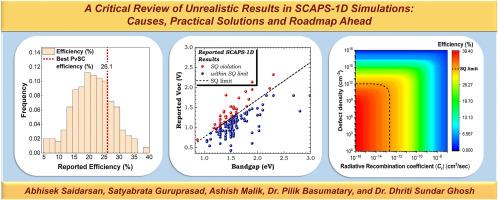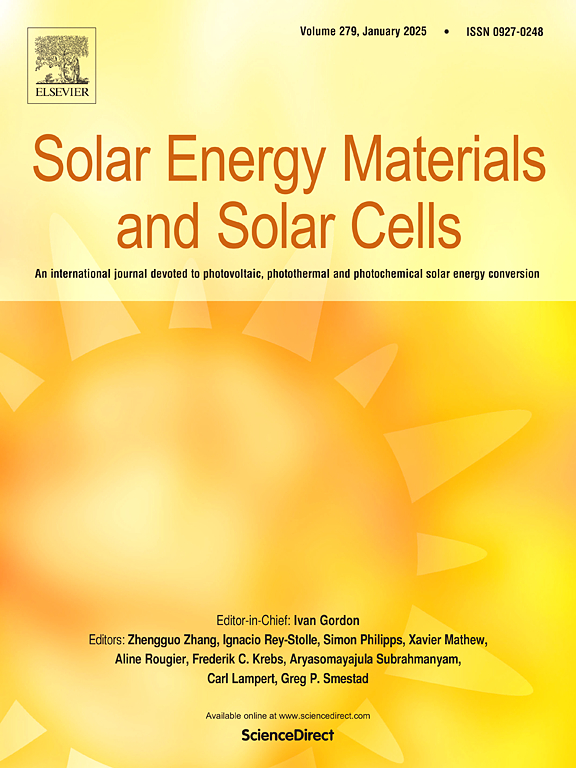对 SCAPS-1D 模拟中不现实结果的批判性审查:原因、实际解决方案和未来路线图
IF 6.3
2区 材料科学
Q2 ENERGY & FUELS
引用次数: 0
摘要
一维太阳能电池电容模拟器(SCAPS-1D)已成为光伏界广泛使用和流行的电气模拟工具。最近,随着实现了由包晶石材料提供的广泛化学可调性,报告夸大太阳能电池设备性能的科学论文越来越多,这些性能与最佳实验结果相差甚远,有些甚至超过了基本的肖克利-奎塞尔极限。虽然其中一些预测可能暗示着实验进展的巨大潜力,但必须谨慎对待这些夸大的结果。在本研究中,我们对 250 多种已报道的包晶体太阳能电池结构进行了全面调查,结果不可否认地表明,这些结果主要是由于不切实际的输入参数造成的,如低辐射重组系数、低缺陷密度和高掺杂浓度。此外,还探讨了模拟方法的不一致性和 SCAPS-1D 的光学局限性。为解决这些问题,提出了包括标准模拟协议在内的若干建议。软件生成的结果可能并不总是代表实际电池性能,因为它们在很大程度上依赖于输入和软件算法的有效性。本文章由计算机程序翻译,如有差异,请以英文原文为准。

A critical review of unrealistic results in SCAPS-1D simulations: Causes, practical solutions and roadmap ahead
One-dimensional Solar Cell Capacitance Simulator (SCAPS-1D) has become a widely used and popular electrical simulation tool in the photovoltaic community. Recently, with the realization of broad chemical tunability provided by perovskite materials, there has been a concerning increase in scientific papers reporting inflated solar cell device performance that deviates significantly from the best experimental results, with some even surpassing the fundamental Shockley-Queisser limit. While some of these projections might suggest significant potential for experimental advancements, it is crucial to approach such exaggerated results with caution. In this study, a comprehensive survey of over 250 reported perovskite solar cell architectures yielded the undeniable implication that such results are primarily due to unrealistic input parameters such as low radiative recombination coefficient, low defect densities, and high doping concentrations. Additionally, inconsistencies in simulation methods and the optical limitations of SCAPS-1D have also been explored. To address these issues, several recommendations, including a standard simulation protocol, have been proposed. Software-generated results may not always represent the actual cell performance as they heavily rely on the validity of inputs and software algorithms.
求助全文
通过发布文献求助,成功后即可免费获取论文全文。
去求助
来源期刊

Solar Energy Materials and Solar Cells
工程技术-材料科学:综合
CiteScore
12.60
自引率
11.60%
发文量
513
审稿时长
47 days
期刊介绍:
Solar Energy Materials & Solar Cells is intended as a vehicle for the dissemination of research results on materials science and technology related to photovoltaic, photothermal and photoelectrochemical solar energy conversion. Materials science is taken in the broadest possible sense and encompasses physics, chemistry, optics, materials fabrication and analysis for all types of materials.
 求助内容:
求助内容: 应助结果提醒方式:
应助结果提醒方式:


